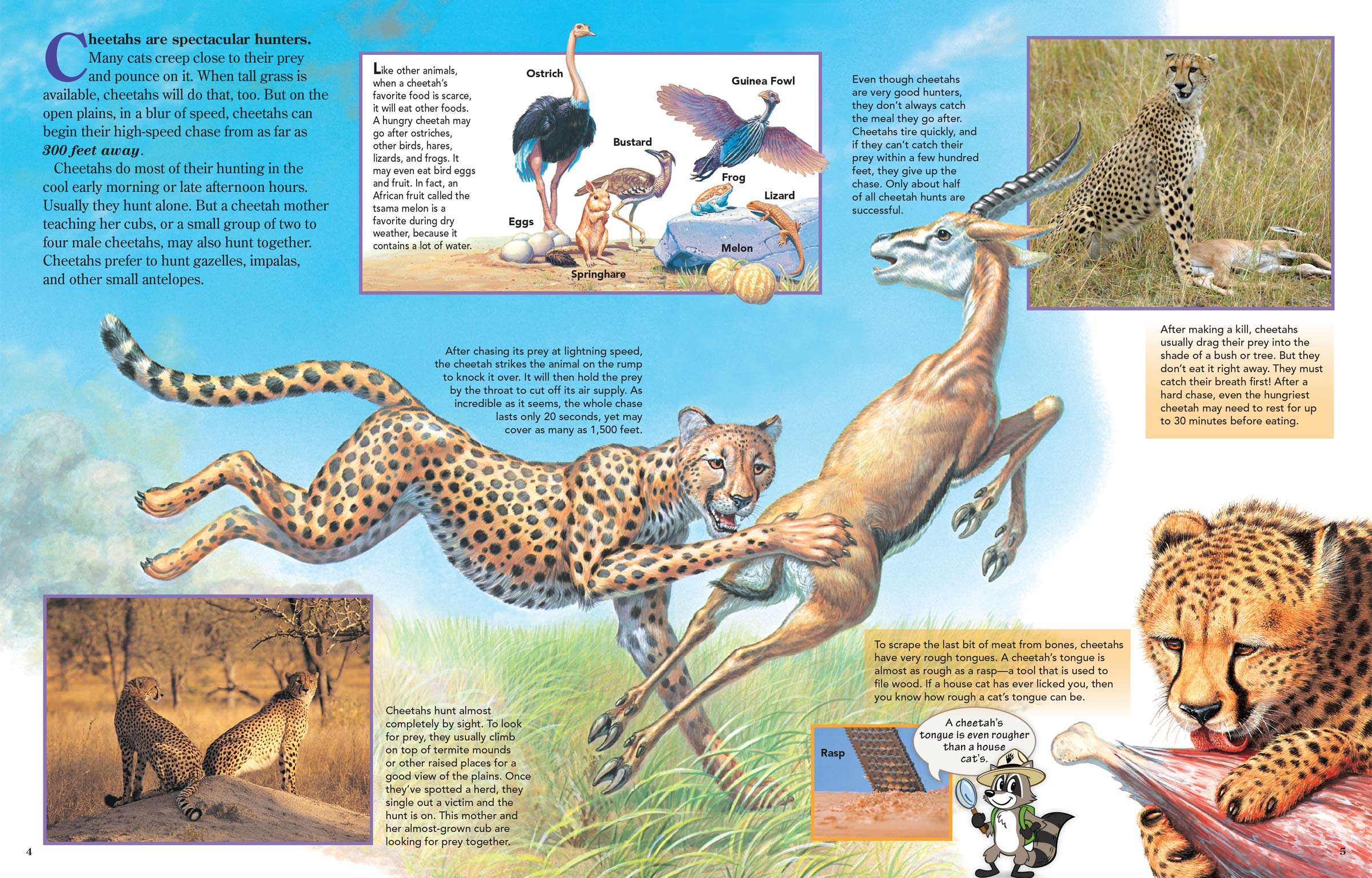
Cheetahs Are Spectacular Hunters
ByCheetahs are spectacular hunters. Many cats creep close to their prey and pounce on it. When tall grass is available, cheetahs will do that, too. But on the open plains, in a blur of speed, cheetahs can begin their high-speed chase from as far as 300 feet away.
Cheetahs do most of their hunting in the cool early morning or late afternoon hours. Usually they hunt alone. But a cheetah mother teaching her cubs, or a small group of two to four male cheetahs, may also hunt together. Cheetahs prefer to hunt gazelles, impalas, and other small antelopes.
Like other animals, when a cheetah’s favorite food is scarce, it will eat other foods. A hungry cheetah may go after ostriches, other birds, hares, lizards, and frogs. It may even eat bird eggs and fruit. In fact, an African fruit called the tsama melon is a favorite during dry weather, because it contains a lot of water.
After chasing its prey at lightning speed, the cheetah strikes the animal on the rump to knock it over. It will then hold the prey by the throat to cut off its air supply. As incredible as it seems, the whole chase lasts only 20 seconds, yet may cover as many as 1,500 feet.
 Cheetahs hunt almost completely by sight. To look for prey, they usually climb on top of termite mounds or other raised places for a good view of the plains. Once they’ve spotted a herd, they single out a victim and the hunt is on. This mother and her almost-grown cub are looking for prey together.
Cheetahs hunt almost completely by sight. To look for prey, they usually climb on top of termite mounds or other raised places for a good view of the plains. Once they’ve spotted a herd, they single out a victim and the hunt is on. This mother and her almost-grown cub are looking for prey together.
Even though cheetahs are very good hunters, they don’t always catch the meal they go after. Cheetahs tire quickly, and if they can’t catch their prey within a few hundred feet, they give up the chase. Only about half of all cheetah hunts are successful.
After making a kill, cheetahs usually drag their prey into the shade of a bush or tree. But they don’t eat it right away. They must catch their breath first! After a hard chase, even the hungriest cheetah may need to rest for up to 30 minutes before eating.
To scrape the last bit of meat from bones, cheetahs have very rough tongues. A cheetah’s tongue is almost as rough as a rasp—a tool that is used to file wood. If a house cat has ever licked you, then you know how rough a cat’s tongue can be. A cheetah’s tongue is even rougher than that!

